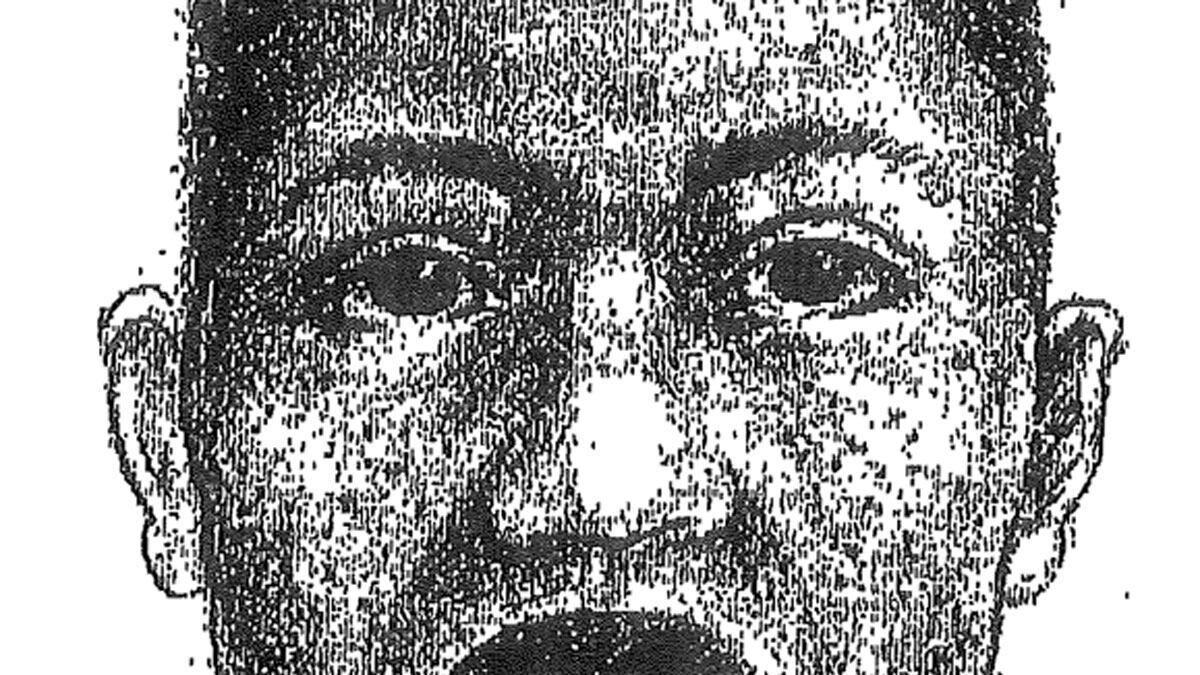It was 7:30 p.m. on a crisp November evening in 1997 when Jane L. arrived home to her townhouse in North Potomac, a tony enclave near Washington, D.C. She was walking down the hallway when she noticed what looked like a blanket draped over a chair in her den. When she moved closer, a ghostly figure arose from the chair, tossed the blanket over her head, pushed her to the floor, and sexually assaulted her. The man, who police had dubbed the Potomac Rapist, threatened to kill her before he walked out the front door. Outside on the front steps, the sound of his scream ripped through the night.
“It was like, ‘Yeeeeah,’” said Washington D.C. cold case detective Todd Williams. “It was like someone screaming in victory.”
It would turn out to be the final attack in a series of eight rapes that terrorized the Maryland neighborhood over a seven-year period beginning in 1991. The perpetrator stalked his victims on weeknights near or in new housing developments. Once he gained entrance, he would cover their heads with blankets before assaulting them. He would tell them that he knew them before he disappeared into the night. Montgomery County detectives patrolled the areas for years and set up surveillance around new developments but never caught a break.
Now cold case detectives from two states are starting a full-fledged search to catch the elusive predator. To aid in their search, Washington D.C. detectives are launching a website dedicated to the Potomac Rapist, a cyber tool that is becoming increasingly common as detectives across the country attempt to resurrect old cold cases where clues have long dried up.

Eight months after Jane L. was attacked, unbeknownst to the Montgomery detectives, the Potomac Rapist struck again 24 miles away in Washington. This time, he went further.
It was a breezy, balmy evening on August 1, 1998. 27-year-old Christine Mirzayan was walking to her dorm on the picturesque campus of Georgetown University when she was attacked, sexually assaulted and sadistically murdered. Her body was discovered the following day off a pathway in the woods. Her killer left behind a mess—her skull had been bashed in with a 70-pound rock. In an attempt to make it look like a robbery, he put a brick in her purse and threw it into a nearby canal, where it was discovered six months later by a construction crew when the canal was being drained.
The death of Mirzayan, the daughter of Iranian immigrants and a Congressional fellow with the American Association for the Advancement of Science shocked the tight-knit college community. For years detectives suspected that her gruesome slaying was linked to the strange deaths of Joyce Chiang, a young government lawyer whose body was found in 1999 along the banks of the Potomac River, and Chandra Levy, the Washington D.C. intern who was romantically linked to California congressman Gary Condit and disappeared in May of 2001.
“They thought there might be a serial killer, but it turned out there was no connection,” said Williams. Levy's killer was convicted of her murder last year and sentenced to 60 years. Williams said Chiang died in a botched robbery attempt.
Then, in 2009, a possible clue to Mirzayan’s murder surfaced. Williams and his partner Tony Brigidini were stunned to learn that DNA evidence linked her murder to the Potomac Rapist, a slippery and cunning assailant whose MO was remarkably different than Mirzayan’s killer’s. The rapes in the Potomac area were all indoor attacks. Mirzayan’s attacker grabbed her off the street and killed her.
Now, with the help of the internet—which barely existed when the rapist began operating—Williams and his partner think they may have a second chance at catching him. At the end of June, the Washington D.C. Police Department plans to unveil a website dedicated to finding the Potomac Rapist, a technique investigators around the country are starting to use to kick-start cold cases. Once they do, longtime residents of the city will likely be stunned to learn that the criminal who made frightening headlines over a decade ago might be once again working in their midst.
“We are trying to get this out,” said Williams. “Clearly we have a serial rapist out there. At this point, we are trying to be proactive and not sit around and wait for someone to call. Somebody knows this guy.”
In the Potomac Rapist, detectives have painted a chilling portrait of a skilled burglar who, despite the populated communities he targeted, stalked his victims for days before breaking into their homes and waiting for them. As his perverse appetites grew, he became more brazen. And as news spread, his attacks seemed to become more violent and theatrical. He would try to engage his victims in a perverse form of pillow talk, asking them about their own previous sexual encounters while he raped them.
“He wasn’t concerned that people were home,” said Williams. “He was confident he could accomplish what he came to do and leave. He took more of a risk as the cases progressed and he became more violent.”
Police are looking at what clues his behavior can offer. For instance, he attacked his victims only on weekday evenings between 6 and 10 p.m. “He is attacking these women at a high-risk time,” said Montgomery County Police Department detective Joe Mudano, who is working with Washington cops on the cases. “The first thing we thought of was he is accountable to someone so he can’t be out all night.”
As the cops started to investigate they learned that the rapist was articulate and soft spoken, and in the majority of cases, he threw a sheet over his victims’ heads to prevent them from seeing his face. “There’s something in me that thinks that he might have had prior contact with some of the women,” said Mudano. “He does not want to be seen. Maybe there is some distinct mark. He turns them around so they don’t see his face. Maybe he is ashamed?"
The first rape occurred in May of 1991 in a new housing development in North Potomac. The 31-year-old victim had just arrived home from a trip. Police said the rapist cut the telephone cord before he gained access through the basement window. That fall he struck again, assaulting an 18-year-old college student who was babysitting three young children. The teenager told police that she was attacked shortly after her boyfriend went home. Her assailant was lying in wait in the garage. “We aren’t positive whether she was the intended target or the homeowner,” said Mudano.
In November of 1991, he attacked an anesthesiologist in Bethesda, Maryland, gaining entrance through a second-floor window and hiding until she came home. Police said he lured her to the front door by knocking on the wall, then ambushed her as she walked to the door. He tied her up with rope. After her ordeal, he turned on the television and engaged her in conversation. “He told her he had seen her around the hospital,” said Williams. Later, the victim told police she suspected an intruder had broken into her house the previous week and might have eaten food from her fridge.
Although the police pressure was mounting, a month later, he returned again to the North Potomac site and attacked another woman whose husband was away on a business trip. He punched her in the face and warned her to keep quiet so she wouldn’t wake up her children. A neighbor later told police that she saw an African-American male hanging around in the woods behind the victim’s house. She described him as clean shaven with a stocky build, in his late twenties or early thirties, around 180 pounds, and between 5-foot-9 and 6 feet.
“By this point we are sure they are connected,” said Mudano. “They are spread out so much so it is tough to do surveillance. We pulled plain-clothes cops in to stake out different neighborhoods. We thought he had to be trolling, spending time setting things up. We went to all the neighborhoods and gave people a general description of the suspect. No one got a good look at him.”
It seemed like he was becoming bolder. A month later and a block away from the last attack, he barged into the basement apartment of a live-in housekeeper less than 20 minutes after her employers left to go to a movie. But this time, the victim fought back. His rape attempt was foiled, but he viciously beat her with a portable stereo before fleeing. The next-door neighbor told police she saw someone lurking behind her neighbor’s air conditioner 30 minutes before the attack, but failed to call 911.
The attacks abruptly ended until 1994. Then, he attacked a mother of two who lived near a new housing development. She told police that one hour before the assault she received a call from a man looking for her husband, a used-car salesman. The caller claimed the woman’s husband ripped him off and sold him a car with a faulty engine. “We figure he crossed paths with the husband at one point,” said Murtado. “He says, ‘Your husband is not as nice a guy as you think.’ He called to make sure he wasn’t home. He knew the husband was a car salesman.”
After another lengthy break he resurfaced again in February of 1997 in a middle class suburb of Montgomery County and attacked a 19-year-old girl in the kitchen of her townhouse. Before he left, he snatched a $100 bill from her birthday card.
Nine months later, the Potomac Rapist assaulted his last victim in Maryland, and eight months after that, he killed Mirzayan, a newly married intern with a promising future in biochemistry. The student from California was in the last week of her fellowship program.
“He was outwardly expressing his victories,” said Williams. “With Christine, he reached the highest level of violence he could achieve. But he was also escalating his risk factor as well.”
Williams said it is entirely conceivable the Potomac Rapist has stopped. But, then again, maybe he hasn’t. “Maybe the murder didn’t satisfy his urges and it caused him to step back,” he said. “Maybe he was arrested. Maybe his urges have changed. He may have changed his pattern. We just don’t know.”






